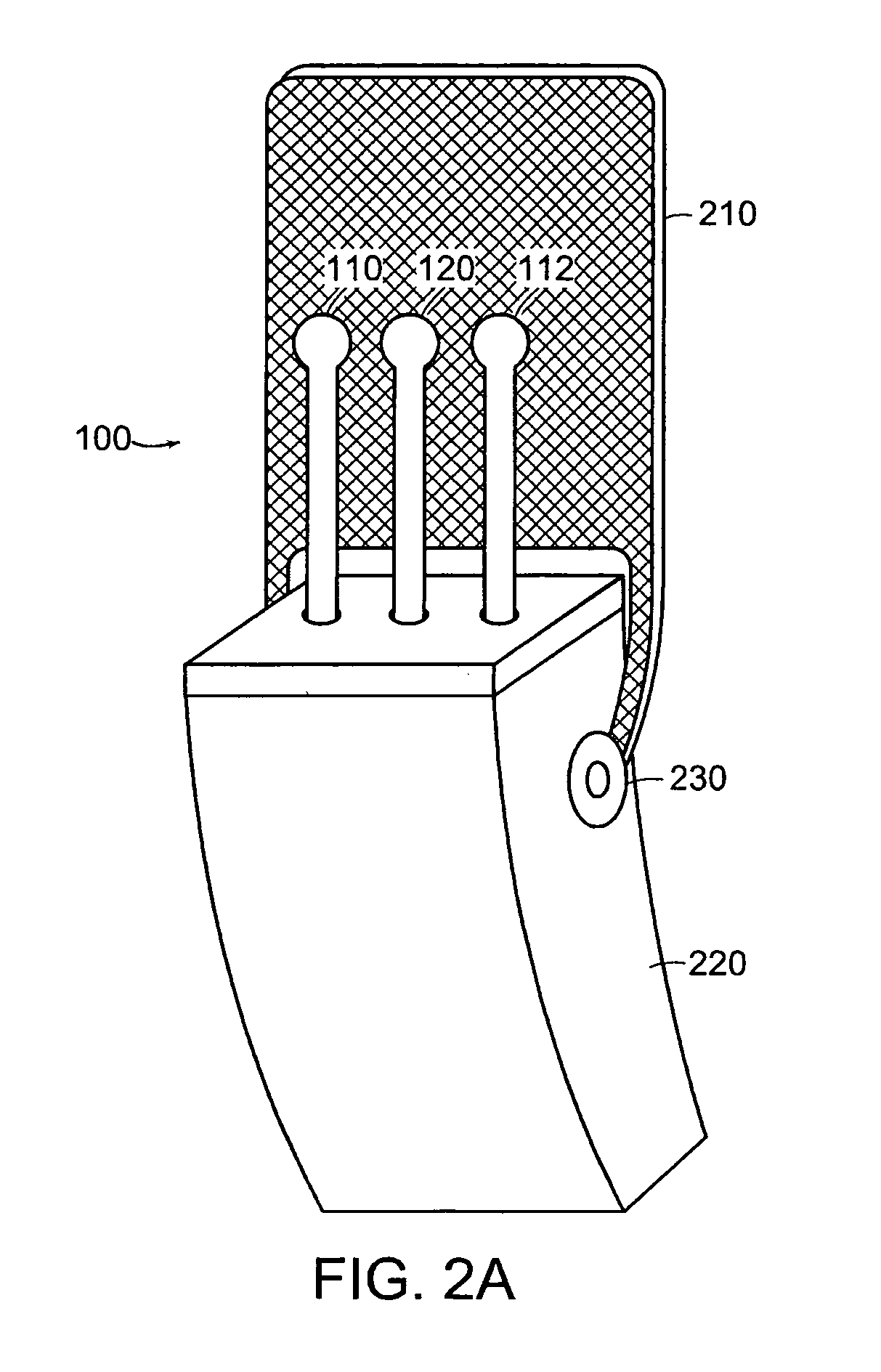Beamforming using a backplane and passive antenna element
a backplane and antenna element technology, applied in the direction of antennas, antenna details, electrical equipment, etc., can solve the problems of poor antenna gain of corresponding cell phone antennas, inability to mitigate interference or reduce fading, and general inability of antennas used in these phones so as to reduce interference and fading, reduce the cost of manufacture, and facilitate assembly
- Summary
- Abstract
- Description
- Claims
- Application Information
AI Technical Summary
Benefits of technology
Problems solved by technology
Method used
Image
Examples
Embodiment Construction
[0033]A description of preferred embodiments of the invention follows.
[0034]FIG. 1 is a block diagram and partial perspective view of antenna device 100 according to certain principles of a preferred embodiment. As shown, active antenna element 120 is disposed between passive antenna element 110 and passive antenna element 112. Both active antenna element 120 and passive antenna elements 110 and 112 are disposed on a similar side of backplane 130. In this embodiment, both active antenna element 120 and passive antenna elements 110 and 112 are fixed to base plane 140.
[0035]However, antenna device 100 can be fabricated so that some or all of the antenna elements are retractable or foldable for easy stowing. For example, some or all of the antenna elements can be automatically, manually, electronically or mechanically adjusted so that a corresponding device including antenna device 100 is compact when not in use, yet still functional when open and in use. Consequently, antenna elements...
PUM
 Login to View More
Login to View More Abstract
Description
Claims
Application Information
 Login to View More
Login to View More - R&D
- Intellectual Property
- Life Sciences
- Materials
- Tech Scout
- Unparalleled Data Quality
- Higher Quality Content
- 60% Fewer Hallucinations
Browse by: Latest US Patents, China's latest patents, Technical Efficacy Thesaurus, Application Domain, Technology Topic, Popular Technical Reports.
© 2025 PatSnap. All rights reserved.Legal|Privacy policy|Modern Slavery Act Transparency Statement|Sitemap|About US| Contact US: help@patsnap.com



